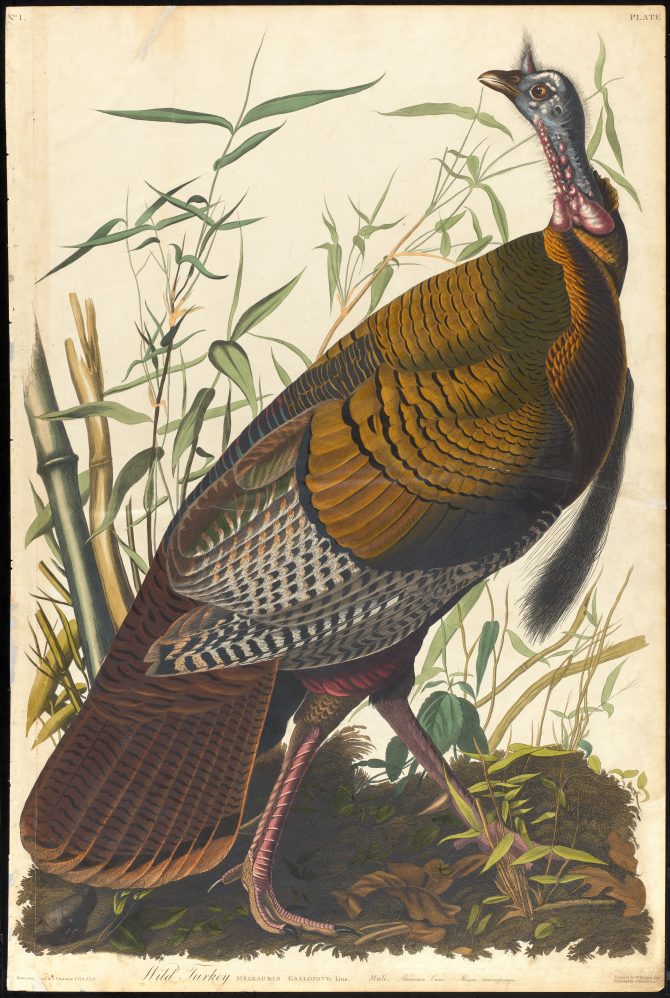The end of the year heralds many things: fireworks (now from an even greater distance than usual), new beginnings, and resolutions. But most importantly, it means it's time to select the winner of the first (and perhaps only?) annual Greatest Animals of Greater Boston contest.
This year, by unanimous decision, the lone judge of the competition has awarded this prestigious honor to Boston's wild turkeys.
Wild Turkeys?
Yes, wild turkeys. These gargantuan gallinaceous (i.e. game and poultry) birds have stuck with us throughout the long, bizarre, and challenging turns of 2020. Turkeys socially distanced in the Seaport, turned up all over the Boston area while everyone was sticking it out at home, and inspired this absurd Boston Magazine article (which could never have been written in any other year). And all along, in more ways than one, they've been reminding us that we're not the only animals in town.
So in honor of their persistent, pervasive presence in our lives this year, this entry looks at the tumultuous history of turkeys in Massachusetts. Perhaps the most surprising thing is that just like nearly all the humans of Massachusetts, the turkeys that live here are descended from relatively recent immigrants.
A Familiar Tale
Like so many other animals, wild turkeys were found in great abundance by the first European invaders of Massachusetts. In 1622, Captain John Smith reported large numbers in New England. In the 1630s Thomas Morton and William Wood both described large flocks in eastern Massachusetts.
However, what ensued was a story that repeated itself many times. Europeans hunted turkeys and destroyed their habitat with great rapacity. As early as 1672, John Josselyn reported a great decrease in their numbers, noting that " 'tis very rare to meet with a wild Turkie in the Woods." By the 1830s, shortly after Audubon painted the wild turkey at right for his Birds of America, turkeys were limited to the western part of the Commonwealth, and were reported as "now become scarce and nearly extinct." (1)
The area of Holyoke was the turkeys' last holdout, and the last indigenous wild turkey is believed to have been shot on Mt. Tom in the winter of 1850-1851.
Before we move on, a word on Aubudon's painting at right. His choice not to paint the male turkey in display is, I think, truly unfortunate, and in fact the wild turkey seems to be one of the birds most difficult to do justice to in illustration. Not until photography, in my opinion, did it become possible to capture in a representation the truly outrageous magnificence of a male turkey in full display:
Return of the Turkeys
"Between 1911 and 1967 at least nine attempts in five counties were undertaken to restore turkeys to Massachusetts." Eight of these attempts failed, and one resulted in only a small population in the Quabbin area. So says James Cardoza, a former Division of Fisheries and Wildlife biologist who in 1972 began the tenth attempt to reintroduce wild turkeys to the Commonwealth. (2)
With the help of New York State's Bureau of Wildlife, Cardoza and his staff captured turkeys in projectile nets and began relocating them in western Massachusetts. By 1978, these western populations were sufficiently established to relocate some of their members to points farther east.
With major agriculture relocated westward and much of the original forest in the process of regrowing, turkeys had plenty of suitable habitat, and this reintroduction effort has been a great success.
The fleshy growths on the fellow at right, apparently quite attractive to lady turkeys, are collectively known as caruncles. The growths on the neck are the wattles, while the long thing dangling over the bill is called a snood. Incidentally, 'Caruncle, Wattle, and Snood' has long been noted to sound remarkably like a law firm you might see on TV.
Despite the occasional confrontation, the presence of these large wild animals in the heart of our city and in the surrounding area is something to be celebrated. Perhaps it's even a sign of a future in which even us urban humans find better ways to live with and alongside other animals of all shapes and sizes.
Learning More
You can learn more about turkeys in Massachusetts and about Cardoza's efforts in the articles he wrote for Bird Observer, available online through the University of New Mexico's Searchable Ornithological Research Archive. His most recent and extensive report, published in 2009 as a Research Bulletin of the Massachusetts Division of Fisheries and Wildlife, does not seem to have been digitized yet, but BPL does have a copy in its Research Library collection.
For more general information about wild turkeys and their lives, several subsequent authors state that one of the best sources is none other than John James Audubon's original remarks about these birds, which may be read on the website of the National Audubon Society.
Joe Hutto's experiences raising a group of wild turkeys are the subject of this PBS Nature documentary. This unique story reveals insights into the social and communicative behaviors of these birds. In addition to the Hoopla streaming video linked above, this title is also available on DVD and for streaming through Kanopy. Hutto's book Illumination in the Flatwoods, on which the documentary is based, may be borrowed through the Commonwealth Catalog.
References
- Edward Howe Forbush (1925), Birds of Massachusetts and other New England states, vol. 3, 428-429.
- James Cardoza (1993), "The Wild Turkey: An Update." Bird Observer 21 (5), 253-260. Available online through the University of New Mexico's Searchable Ornithological Research Archive.






Add a comment to: Wild Turkeys: 2020’s Greatest Animals of Greater Boston